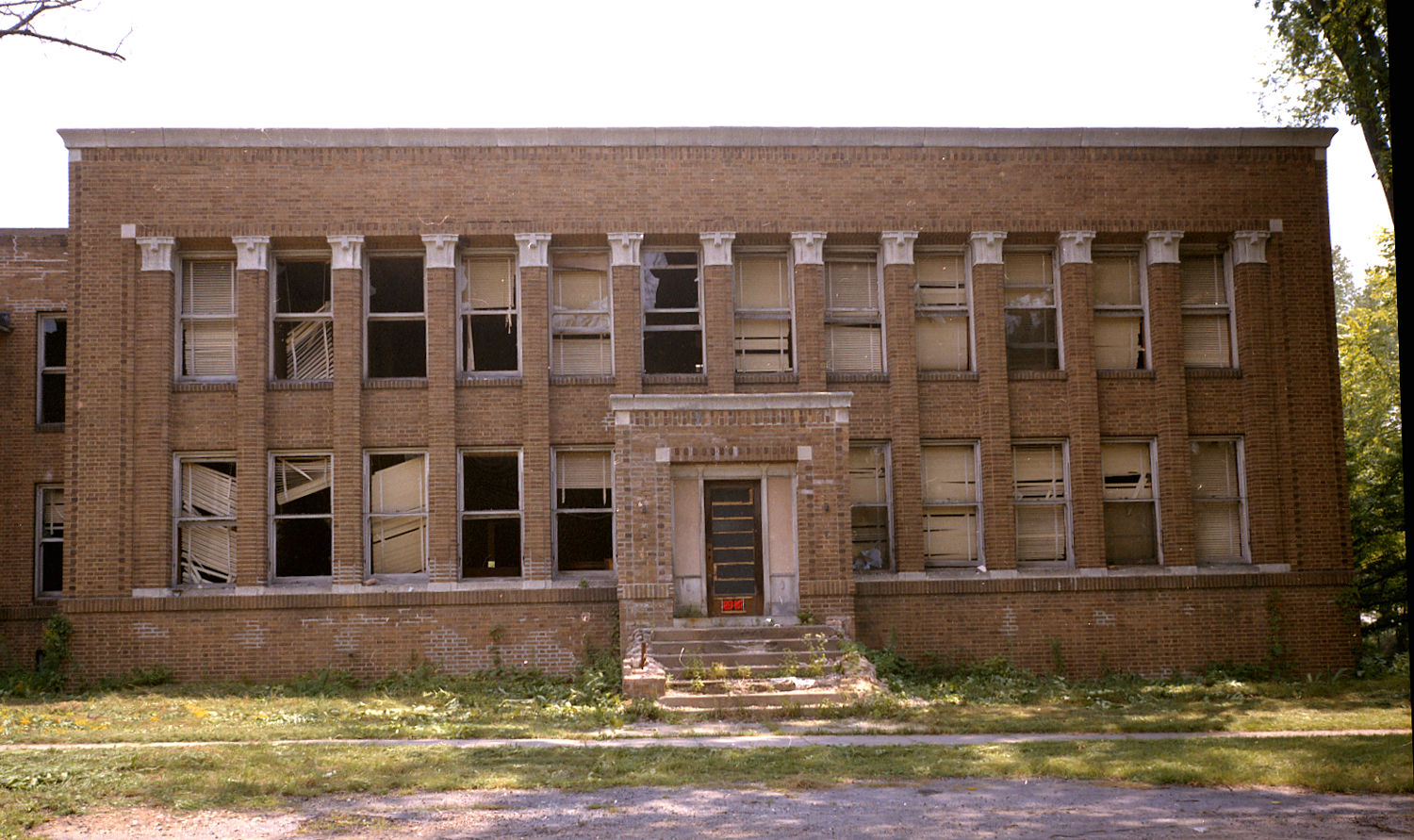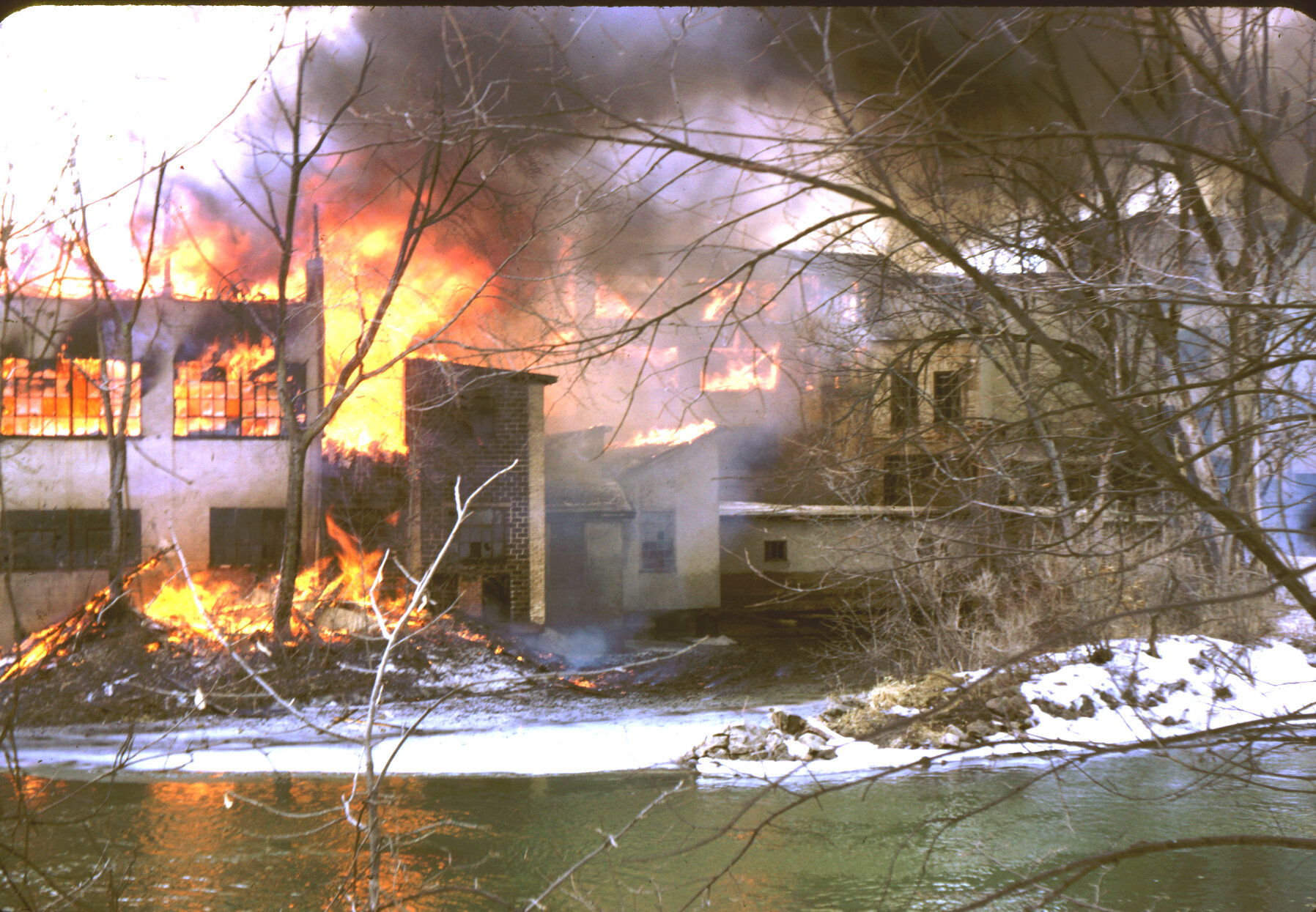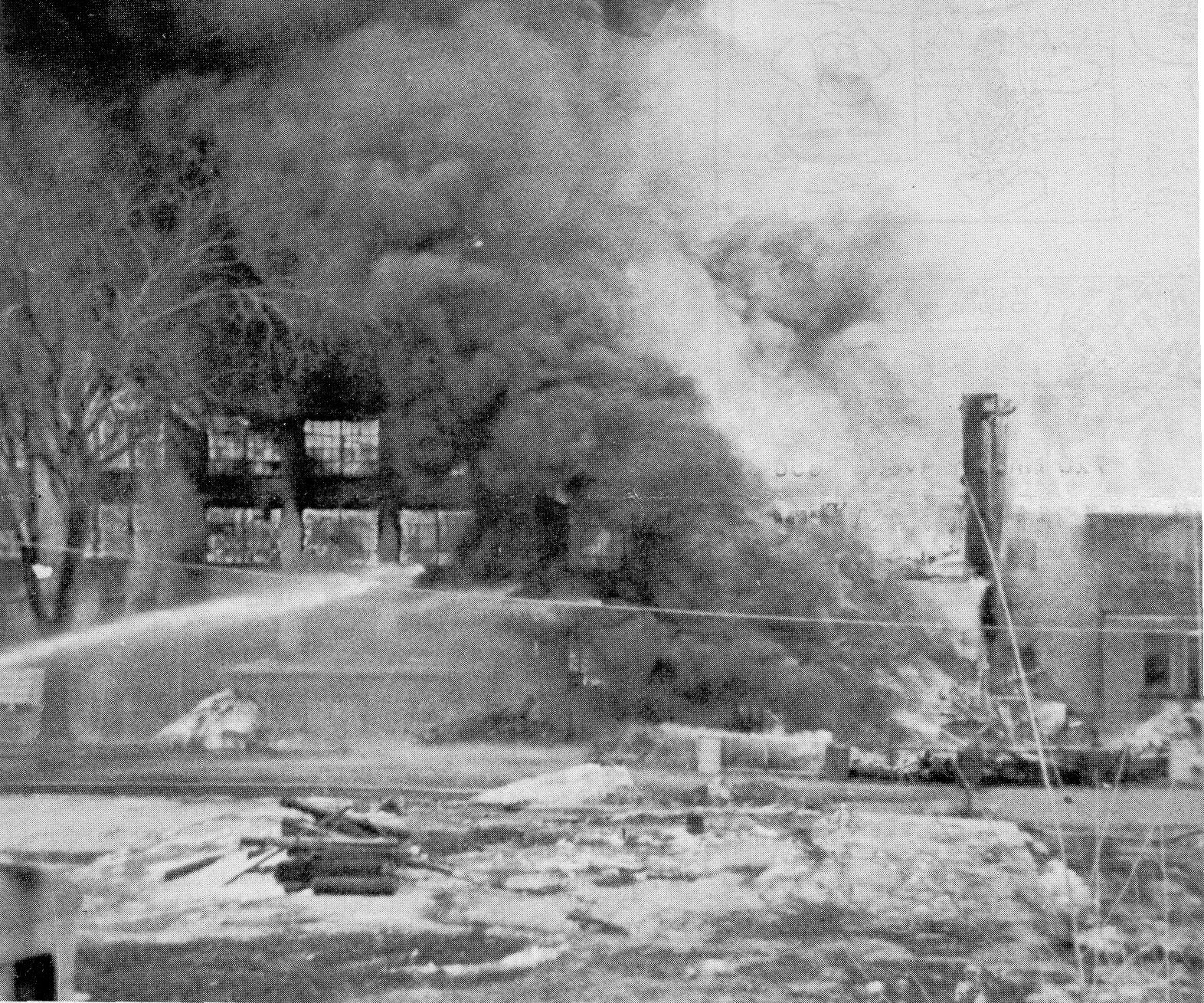Sauk County Historical Society History Center
1980s
2004
2017
Beginning in 1863 with a Millrace…
What might have been a quiet Sunday afternoon in the late winter of 1969 turned out to be one of Baraboo’s most dramatic when the fire siren went off around 2 pm on March 17th. News quickly spread that the old Island Woolen Mill was on fire. The huge mill complex, which had not been active for 20 years, sat on the west side of Baraboo on an oxbow of the Baraboo River. The complex straddled a millrace which created the “island” for which the mill had been named back in 1863 when it started operation. By the late 1860s the firm had about 36 employees and was producing up to 10,000 yards of cloth per month or about 100,000 yards per year -enough cloth to stretch from Baraboo to Madison. In later years, the mill also produced yarn, socks, army blankets and automobile upholstery fabrics.
In 1875 James McFetridge purchased a minority interest in the operation and after his death in 1893 his heirs purchased the remaining shares of the company, consolidating the company under their control in 1901. The company was run by the two sons of James McFetridge, Edward P. and William H. McFetridge, who made considerable expansions to the mill during the first quarter of the twentieth century eventually increasing the operation which came to be considered the largest woolen mill west of Philadelphia.
The mill complex eventually became a series of connected buildings that was over 500 feet long and almost 200 feet wide with several portions having four floors. The estimated floor space exceeds 150,000 square feet.
After the mill closed in 1949 it sat unused for decades. In 1967 the mill complex was donated to Circus World Museum Inc., the non-profit group that started the circus museum in Baraboo. Under an agreement with the Baraboo Management Corporation the former mill was to be turned into warehouse space after hundreds of tons of mill equipment was removed. During removal operations in 1969 a cutting torch being used to cut apart equipment is believed to have started the floor on fire after which a large blaze followed.
By the time the Baraboo Fire Department arrived the fire was out of control and it would take an hour and half just to contain the fire to the central portion of the mill and let it burn itself down. At times flames leaped over 100 feet into the air as three and story portions of the mill burned and collapsed.
When it was all over, much of the mill was a burned out hulk. But not all was lost. The fire had been stopped from reaching the southern end of the mill complex where the offices were located. It would take several years before the ruins were torn down. The City of Baraboo took on the property in the 1970s and was able to use federal land and water conservation funds to purchase the property, clean it up, and turn it into what today is known as Attridge Park. One part of the mill was left standing which was the office portion which had been finished in 1918.
A New Era Begins—The Sauk County Historical Society acquires the Island Woolen Mill Office Building for Research Center
After interfacing with the Wisconsin Department of Interior, the National Park Service, the federal Department of Interior, on December 19, 2006, the Sauk County Historical Society acquired the historic Island Woolen Mill office building from the city of Baraboo for $1, and with it a major fundraising and renovation project was underway. Today that portion of the historic Island Woolen Mill is the Sauk County History Center. It is open to the general public for researching Sauk County history. Before the transfer could happen federal approval was required as the city-owned property was part of park land purchased with federal land and water conservation dollars. Suitable park land had to be found to mitigate the property being turned over to the historical society. SCHS received important assistance from the offices of Baraboo City Attorney Mark Reitz, State Representative Sheryl Albers, Congressman Ron Kind, Congresswoman Tammy Baldwin, and Senators Russ Feingold and Herb Kohl who all helped the process along.
Milestones included
a determination by the Wisconsin Historical Society that the building was historically significant and was eligible for the National Register of Historic Places.
a structural analysis that revealed that the building remained solid and was deemed environmentally safe.
resolution of a red tape issue involving the Wisconsin DNR and the federal Land Water and Conservation Act which had to be completed before the transfer could take place.
After purchase, the Historical Society embarked on a project called the Pillars of Progress Restoration Campaign, which renovated the historic building into the home of the Sauk County History Center. The upper two floors were transformed into office space, a research library and reading room where individuals are able to access information about their families, homes, and the county in general. The lower level of the building, which remains unrenovated, will eventually serve as display space.
Built in 1859
The Island Woolen Mill in Baraboo
An early historian declared the Island Woolen Mill "one of the heaviest manufacturing houses in the state." The original wool mill was built in 1859, near the "island" created by the water raceway that cut across the upper oxbow peninsula. By World War I, the mill was at its peak and had grown from a simple structure to a vast complex of buildings. For most of its existence the McFetridge family owned it and nurtured the business until it grew to be one of the largest textile mills west of Philadelphia.
Production Line
Operated for more than 80 years (1863-1949), the Island Woolen Mill was at one time the largest employer in Sauk County. The mill carded, spun, and loomed material for clothing, automobile upholstery, and during World War II, overcoat material for the army. It eventually occupied the county's largest building in the 1920s.
Fire in 1969
After 1949, the mill stood vacant and was heavily damaged in a fire in 1969. Subsequently most of the mill was demolished except for the office building which is located on Second Avenue near the Baraboo River at the south end of Attridge Park. For years the city used the lower level of the building as a maintenance shop. But with the completion of a new facility on the south side of town, the old building was deemed no longer necessary and was abandoned.
Built in 1917
Built in 1917, the Island Woolen Mill Office Building is a notable example of the work of the Madison architectural firm of Claude & Starck. Active during the early twentieth century, the firm designed many Midwestern buildings including over 40 public libraries and numerous schools. The Island Woolen Mill office building is a rare example of the Prairie style applied to an industrial building. Beginning in 2007, the building was renovated for use as the Sauk County History Center. The Sauk County History Center opened in 2013 to the public. Today it is busy place where the county’s history is researched and shared.














